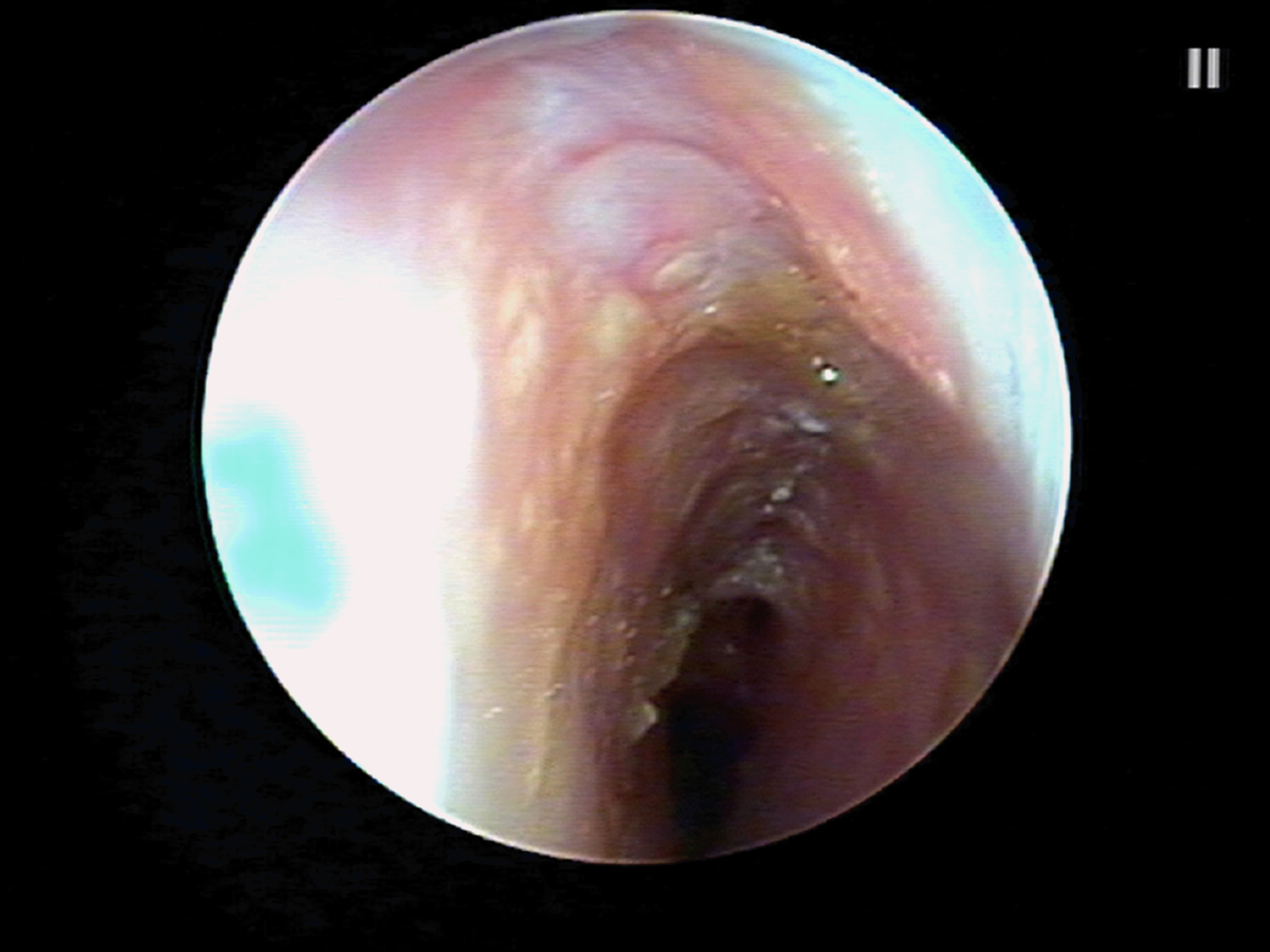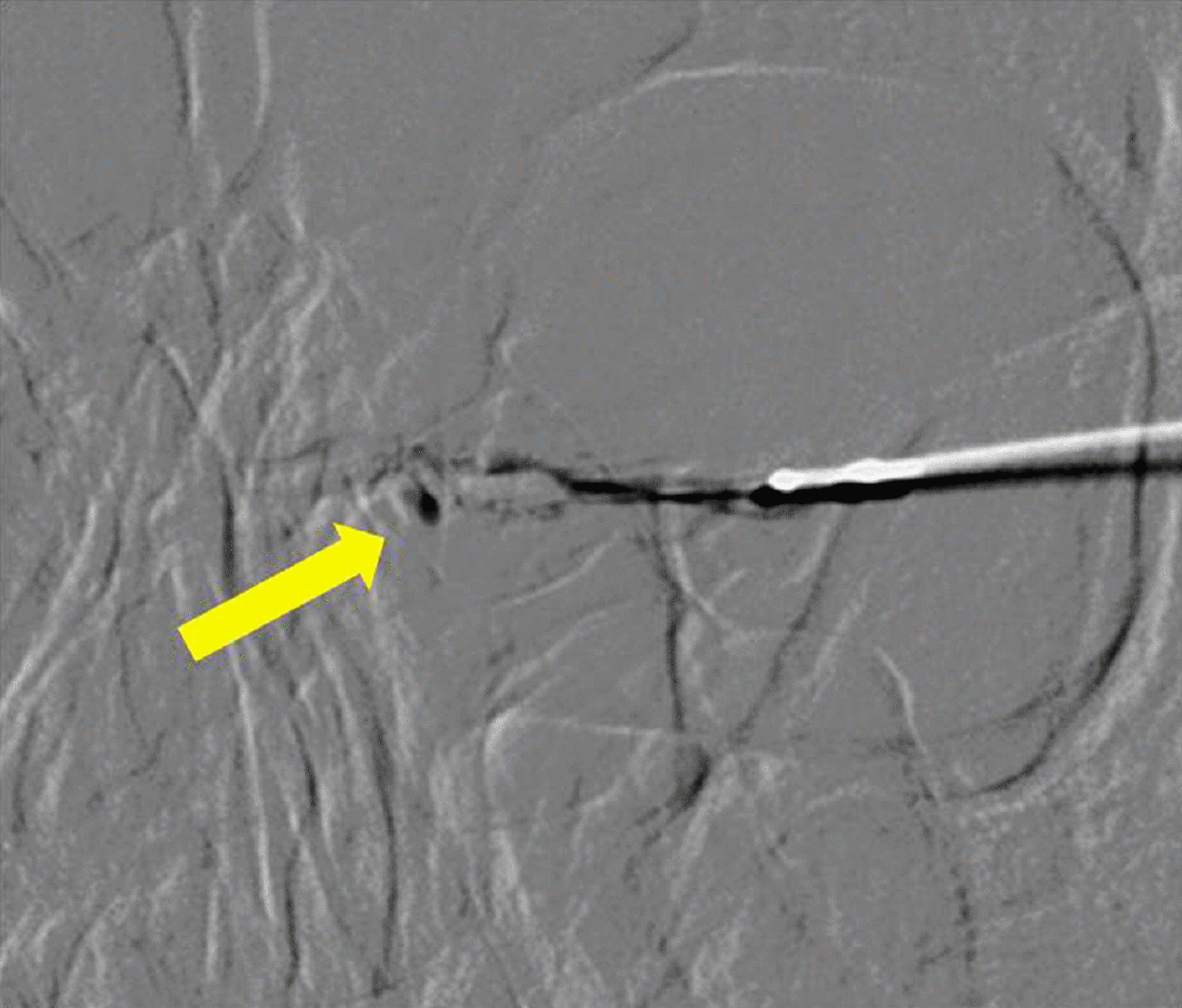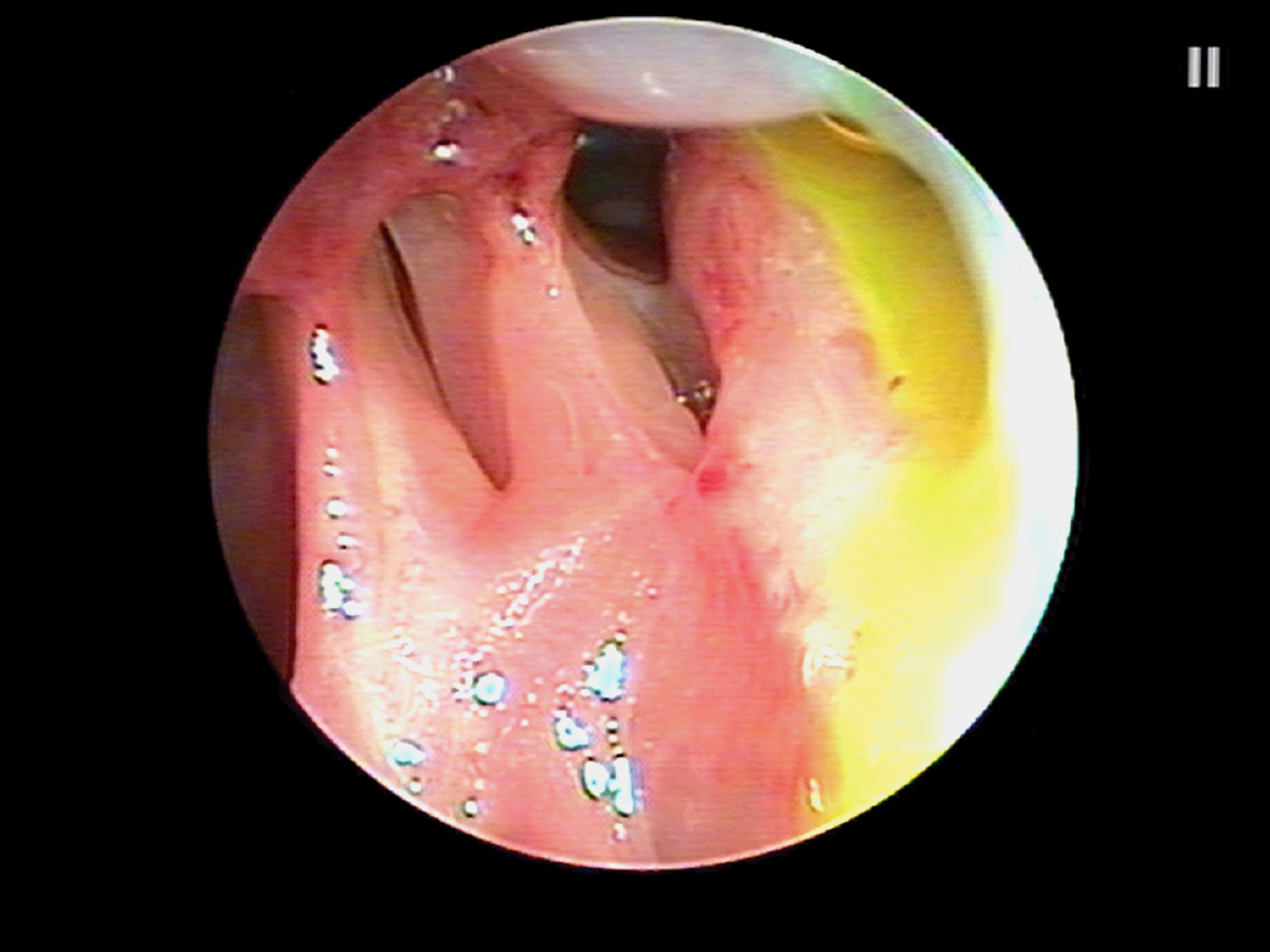Abstract
Purpose
To report a case of nasolacrimal duct obstruction occurring in a patient with Wegener granulomatosis treated success-fully with endoscopic dacryocystorhinostomy.
Case summary
A 36-year-old female diagnosed with Wegener’s granulomatosis 3 years prior and treated with rituximab and cur-rently taking azathioprine 100 mg presented with a 1-year history of left epiphora and mucus in the left eye. Her left tear meniscus was higher than the right and was a hard stop with lacrimal probe when a lacrimal probing test was performed. Mucus was regur-gitated during lacrimal irrigation and middle turbinate was not observed due to granuloma in the nasal cavity. Dacryocystography showed proximal nasolacrimal duct obstruction and a well-defined dacryocystocele 6 x 5 x 6 mm in size was observed on the left lacrimal fossa on facial 3D computed tomography. After synechiolysis for a granuloma in the nasal cavity, endoscopic dacryo-cystorhinostomy was performed and silastic sheet sutured on the nasal septum to prevent resynechia. After 2 weeks and 4 months, the silastic sheet and silicon tube were removed, respectively. The patient was asymptomatic following surgery and there was no regurgitation during lacrimal irrigation test. The ostium was patent at 5 months after surgery using the endoscopic dye test.
References
1. Kwan AS, Rose GE. Lacrimal drainage surgery in Wegener's granulomatosis. Br J Ophthalmol. 2000; 84:329–31.

2. Pakrou N, Selva D, Leibovitch I. Wegener’s granulomatosis: Ophthalmic manifestations and management. Semin Arthritis Rheum. 2006; 35:284–92.

3. Morris DS, Selva D, Dolman PJ. Endonasal dacryocystorhinostomy in Wegener granulomatosis. Arch Ophtalmol. 2010; 128:1212–4.

4. Hardwig PW, Bartley GB, Garrity JA. Surgical management of na-solacrimal duct obstruction in patients with Wegener’s granulomatosis. Ophthalmology. 1992; 99:133–9.
5. Glatt HJ, Putterman AM. Dacryocystorhinostomy in Wegener’s granulomatosis. Ophthal Plast Reconstr Surg. 1990; 6:207–10.
6. Jordan DR, Miller D, Anderson RL. Wound necrosis following da-cryocystorhinostomy in patients with Wegener’s granulomatosis. Ophthalmic Surg. 1987; 18:800–3.

7. Kwan AS, Rose GE. Orbital Wegener’s granuloma resulting from direct extension of nasal disease through a surgical rhinostomy. Br J Ophthalmol. 1998; 82:198.

8. Eloy P, Leruth E, Bertrand B, Rombaux PH. Successful endonasal dacryocystorhinostomy in a patient with Wegener’s granulomatosis. Clin Ophthalmol. 2009; 3:651–6.
Figure 1.
Left nasal cavity. The middle turbinate is not ob-served because of granuloma between the nasal septum and lateral wall.

Figure 2.
Facial computed tomography. (A) Axial view. The dilated lacrimal sac enhanced by inflammation is seen on the lacrimal fossa (arrow). (B) Coronal view shows narrow nasal cavity filled with granulation tissue (arrowhead).





 PDF
PDF ePub
ePub Citation
Citation Print
Print




 XML Download
XML Download